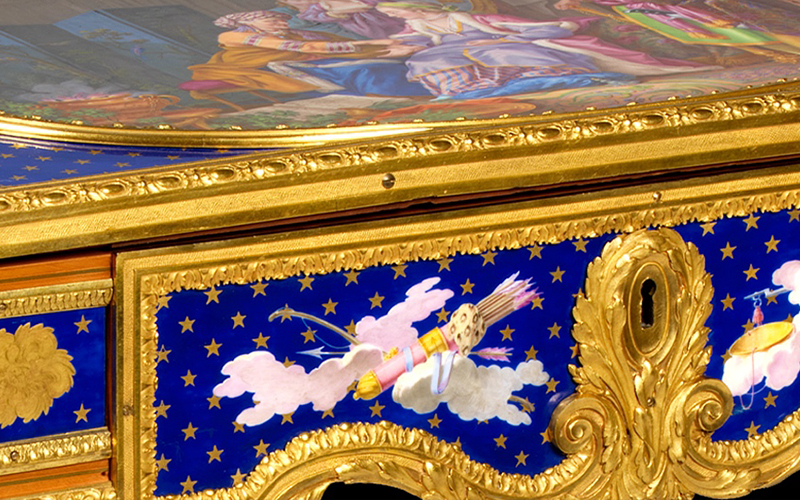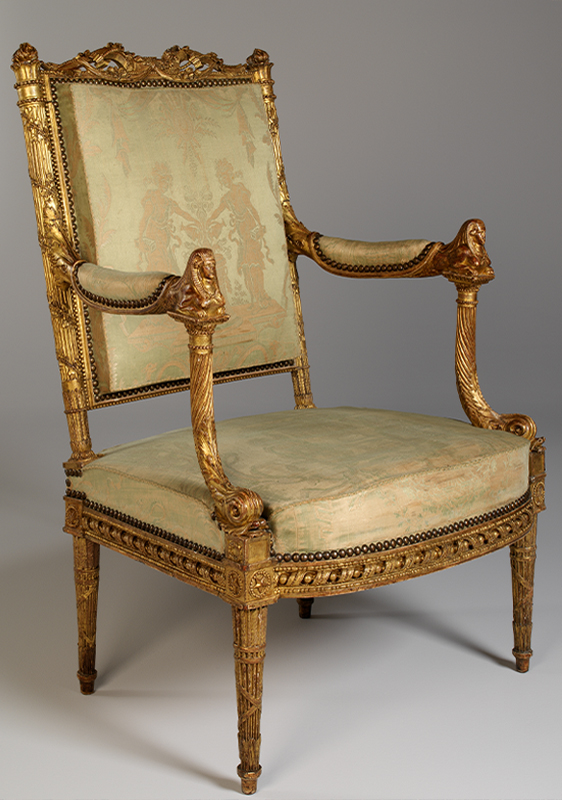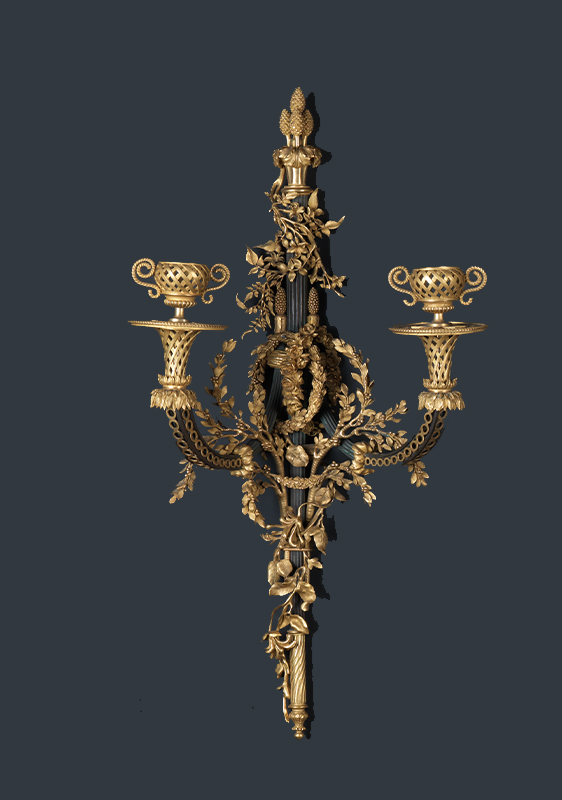Marie Antoinette

Archduchess of Austria and queen consort of France and Navarre, Marie Antoinette is perhaps the most famous woman to be represented at the Calouste Gulbenkian Museum and has been linked to more than one of the works in the Collection.
In 1770, aged just 14 years old, Marie Antoinette was sent to France to marry the Dauphin, the future King Louis XVI, in an attempt to calm tensions between the two kingdoms. After ascending to the throne, her husband gave her a small palace in the park at Versailles, the Petit Trianon. Luxuriously decorated, it was here that the queen found refuge from the obligations of the court – only her closest circle entered the palace. The decoration included a pair of wall candelabra, purchased by Gulbenkian in 1923, featuring an apparently spontaneous distribution of natural elements to conceal the straight lines which became known as ‘Marie Antoinette style’.
Marie Antoinette was involved in several scandals: she was accused of promiscuity, of promoting the Austrian court and of squandering the wealth of the kingdom, which was experiencing a severe economic crisis during the time of her reign. Although there is evidence of her kindness and good nature, the queen became a symbol of the problems besetting the French monarchy and some historians believe that she played a crucial role leading up to the Revolution. In 1793, when the monarchy was abolished, Louis XVI and Marie Antoinette were tried and sentenced to execution by guillotine.


Despite contradictory opinions about her character, Marie Antoinette became an icon of popular culture linked to pomp and fashion, and her life has been recounted from various perspectives in books, films and television programmes. The queen also inspired musicians and fashion designers, who created works based on popular perceptions of her.
Besides the wall candelabra, Calouste Gulbenkian also purchased an armchair which belonged to the queen, part of a set made by master cabinetmaker Georges Jacob which is now lost. Another piece in the Collection, a desk commissioned for the quarters of Madame du Barry, Louis XV’s favourite, also came into the possession of the queen, who gave it to her sister Maria Carolina of Naples.
A Collection of Stories
On a weekly basis, we shared a story around Calouste Gulbenkian’s collection. This section was created in 2020, which is why the articles refer to the Calouste Gulbenkian Museum collection as the Founder’s Collection.
Other stories